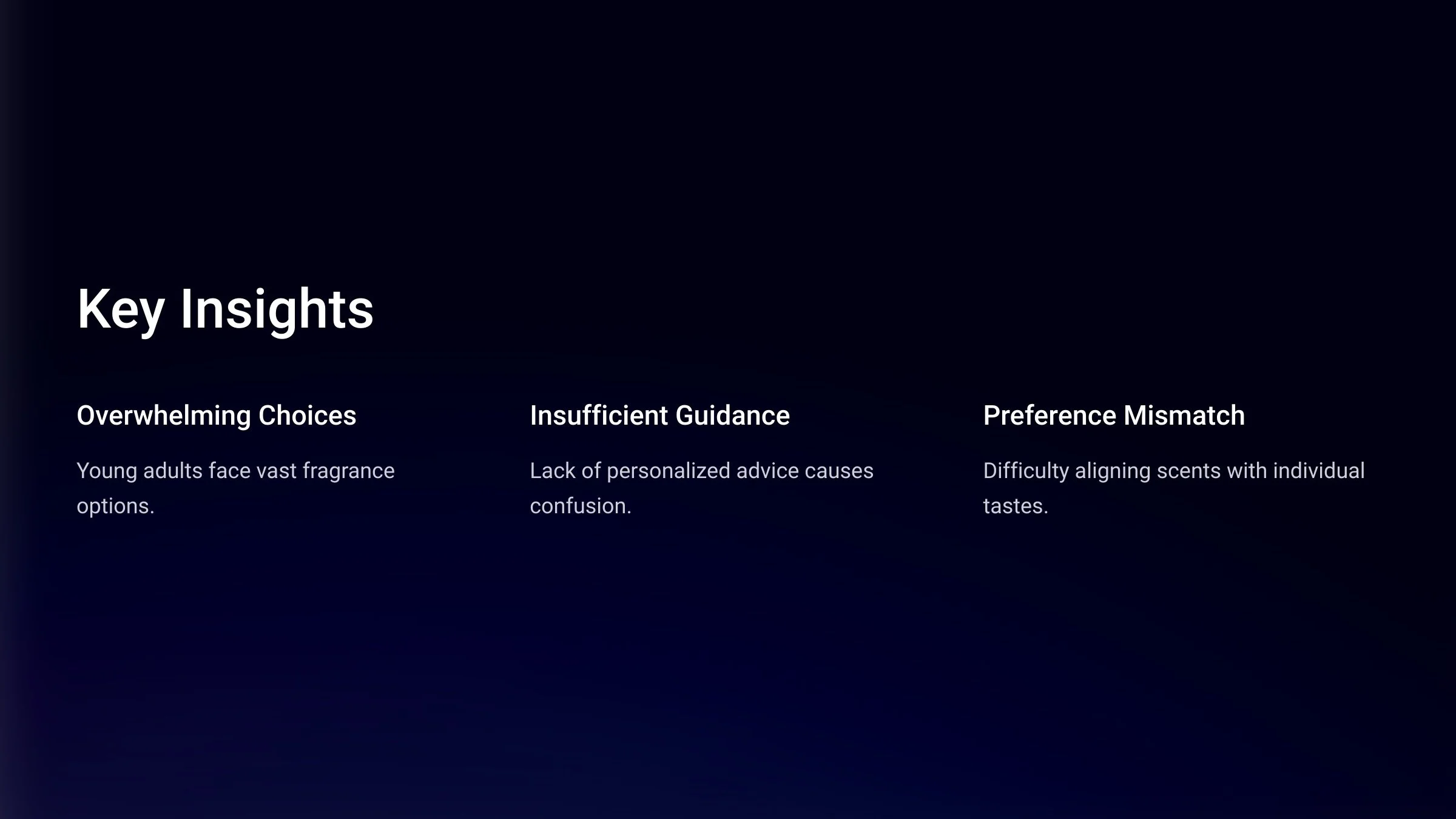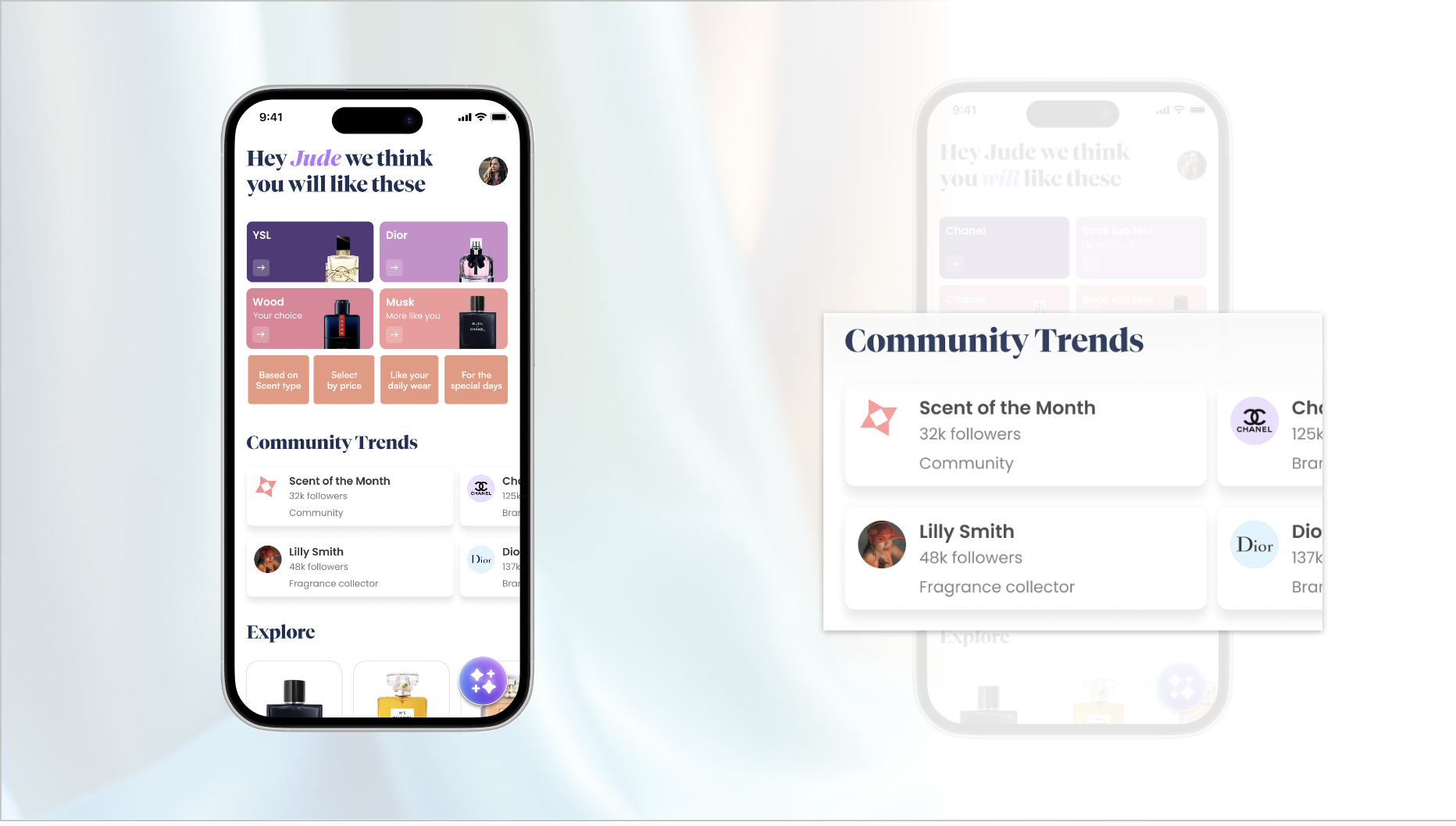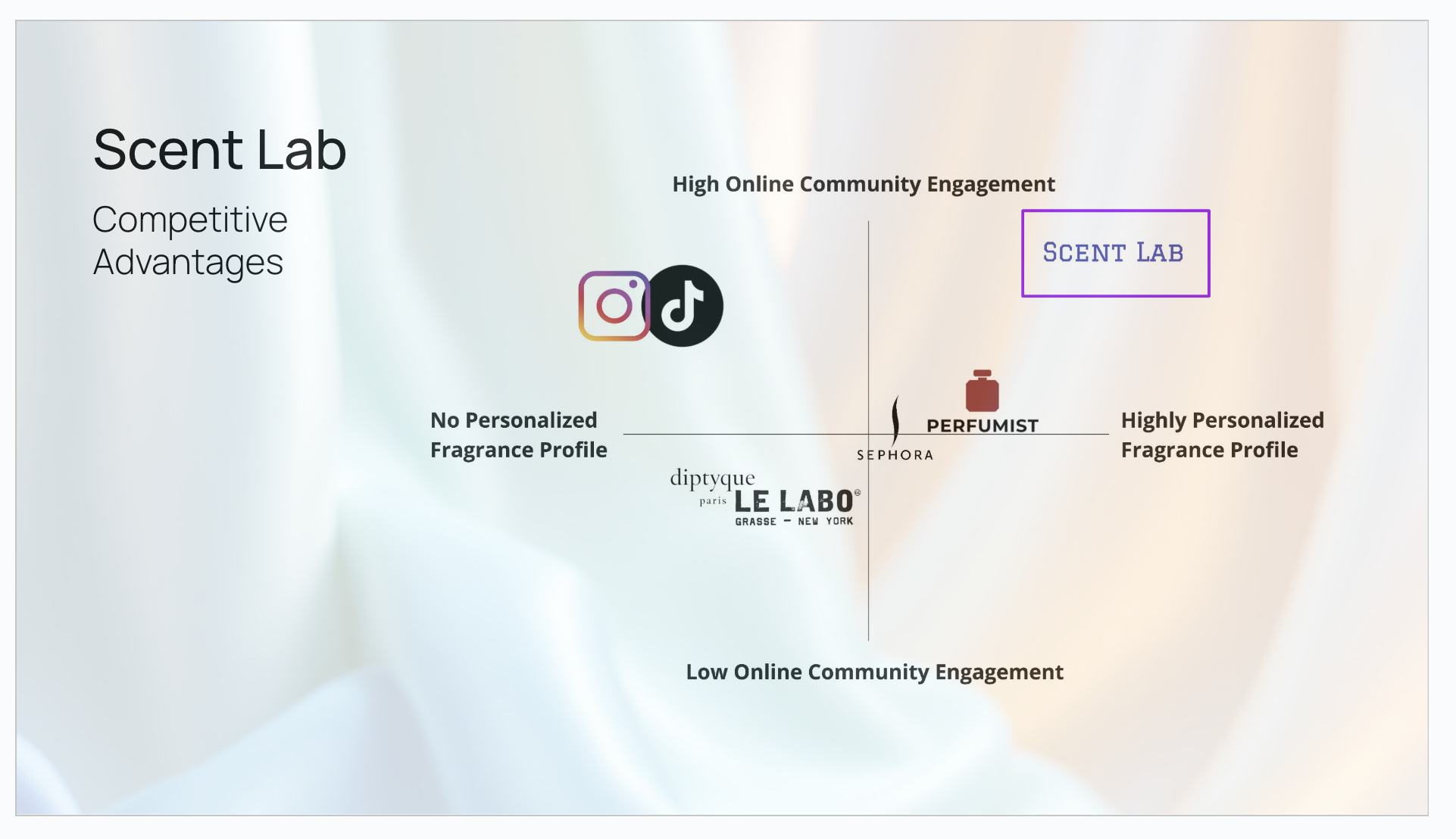CMU, ‘24
SCENT LAB
Overview
Scent Lab is a fragrance discovery platform built to empower young adults in the fragrance discovery phase.
I led research and design strategy in creation of the Scent Lab mobile app—playing a critical role in market and competitor analysis, problem identification, and prototyping and iterating a transformative solution addressing the needs of our target audience.
My Role
UX Researcher, UX Designer
Team
Poorva Wange
Kwon Huang
Ahan Misra
Timeline
3 months
Highlights.
A platform that seamlessly combines intuitive information, fosters community engagement, and enables personalized fragrance discovery in one unified experience.




Context
A changing industry
The fragrance industry is lucrative, growing, and…changing. Young adults, 18-26, are now both the highest daily users and annual purchasers of fragrances.
Is the industry addressing meeting their needs?
The Problem
A Sea of Options
There are copious fragrances available on the market, making it difficult for young adults to select scents that align with their personality, lifestyle, and needs.
We conducted 20 surveys and 12 interviews. Based on this data and research, we identified the following key insights.
The Backbone of the Project
Early Product Criteria
We identified key gaps and early product criteria based on a VOA analysis of individuals seeking perfumes that align with their personal preferences on Sephora's online platform.
We used this to inform the scope and direction of our product and it’s features.
The Challenge of Communicating Scent
We identified a need to communicate scent — but how? We looked at common descriptions used for scent families, did a closed card sort, and decided our solution would need to go beyond simple descriptions.
Limit the Scope
While there was initially internal debate about which phase to focus on, research revealed that consumers need the most support during the discovery phase.
Problem Statement
Young adults struggle with fragrance discovery due to overwhelming options and insufficient guidance, leading to confusion when choosing scents that align with their preference.
How Might We
create a more personalized and accessible fragrance discovery experience that empowers customers to explore and learn about scents, while fostering community engagement.
Low-Fidelity Prototypes
Paving the Way
Personalization Onboarding Quiz
We implemented a QR code-linked Google Form for data collection and feedback. Additionally, we created a short video to illustrate the potential high-fidelity user experience.
Purpose:
Validate if users find the fragrance personalization quiz useful.
Test if we can generate personalized fragrance profiles and users would opt for community sharing.
The Message Was Loud and Clear
Results
Feedback from 20 participants showed 100% found fragrance profile cards useful and 85% opted for community sharing.
We had, however, overlooked variability in mood and occasion and budget as a potential constraint.
Final Tweaks
We included budget and revisited the questionnaire’s information architecture and identified a mix of static questions for core profiles and dynamic questions to capture context-specific needs.
Final Designs
2. Your Personalized Fragrance Profile
View scents that compliment you, discover curated layering recommendations, and connect with a community-driven space for sharing and engagement.
3. Tailoring Your Home Screen
Discover trending scents, compare preferences with friends, and explore curated lists all tailored to you with smart recommendations that align with your unique profile.
Communicating Differentiation
The Scent Lab Difference
2 x 2 Matrix
We created a 2x2 matrix to highlight our focus on the target audience's need for trusted external validation and unique personalization factors, such as mood and occasion.
Scent Lab.
Demystifying the Fragrance Discovery Experience
✔️Robust community engagement
Leaning into external validation from trusted sources and peer support in fragrance discovery.
✔️Hyper personalization
Vectors like mood, occasion, and unique fragrance profiles bridge the gap between descriptions and scents.
✔️Smart Recommendations
Tailored suggestions generated by our algorithm and aligned with your profile.
Takeaways
Working with research is a cheat code
It helped uncover opportunities to explore and led to quick and informed design decisions when internal disagreements arose.
Avoid early solutions
It’s easy to fall into the trap of forming solutions early. Avoiding this trap pushes you to be creative and find fun and unexpected solutions that met actual needs.














